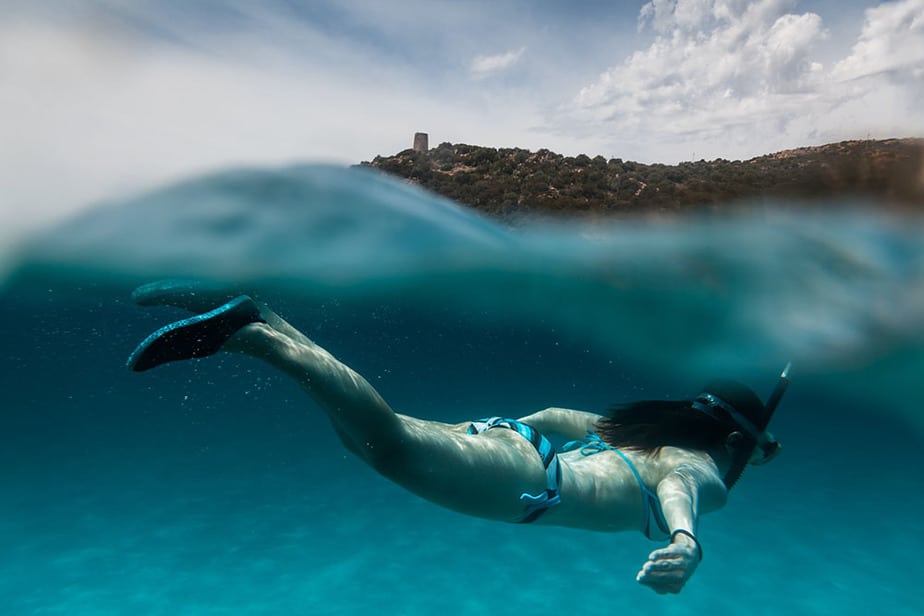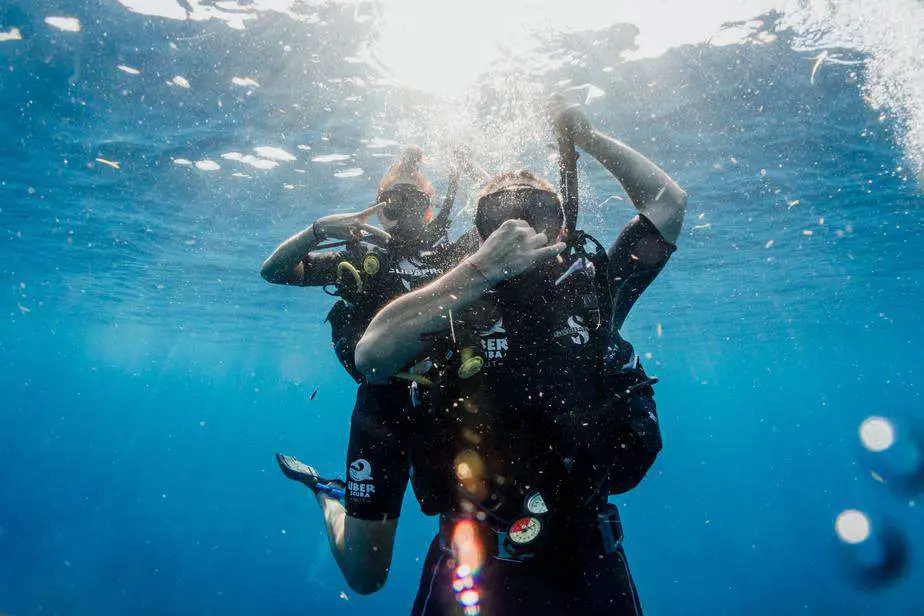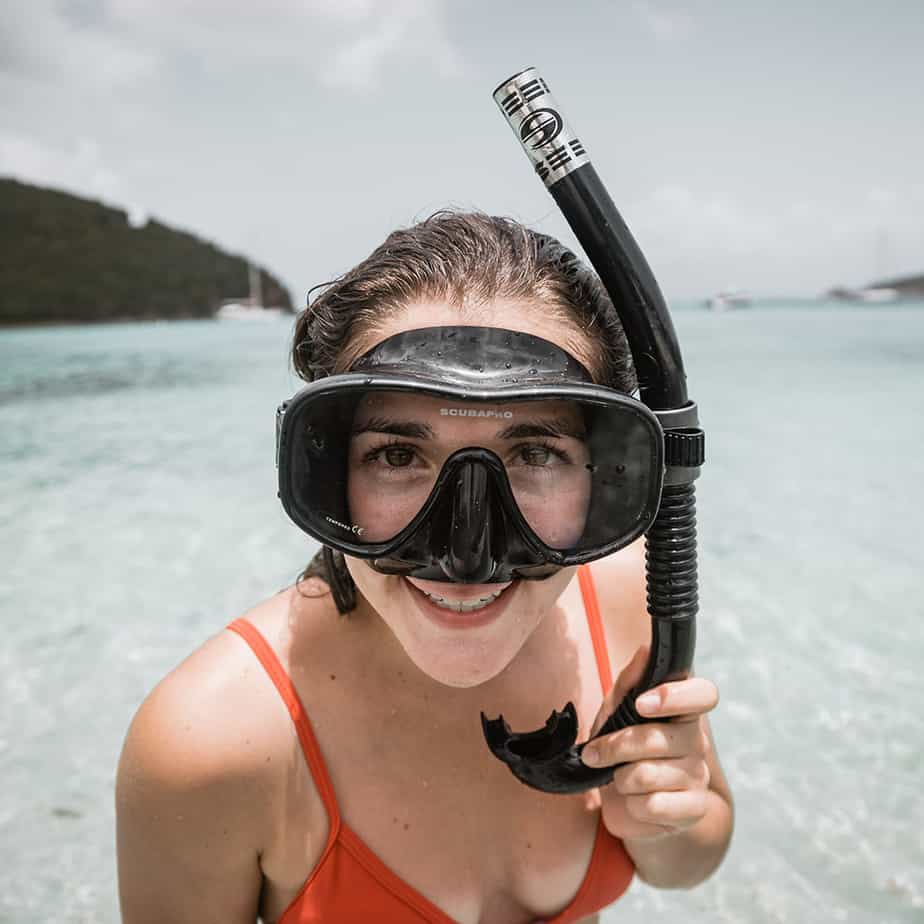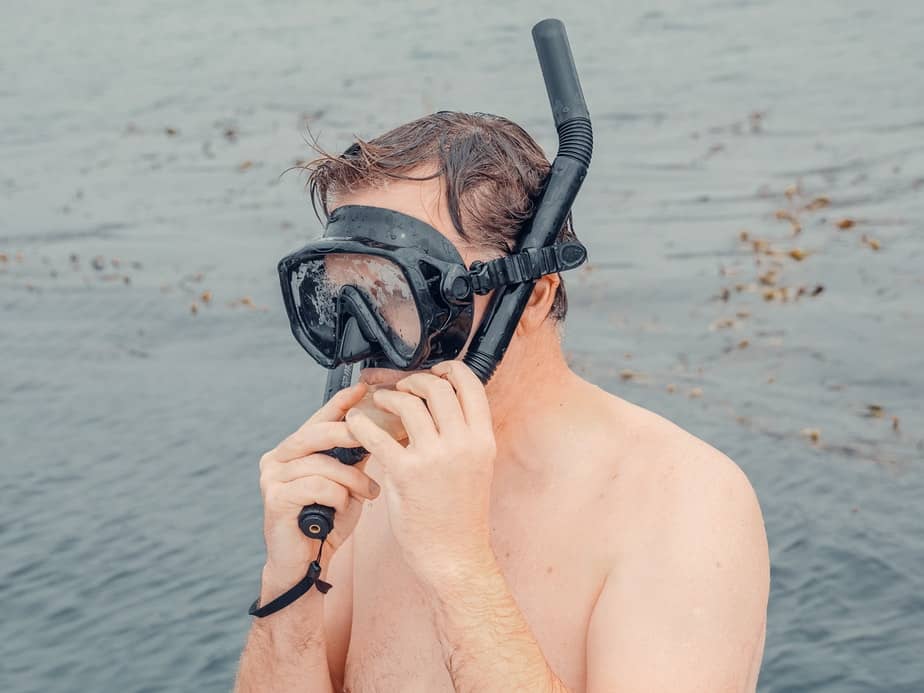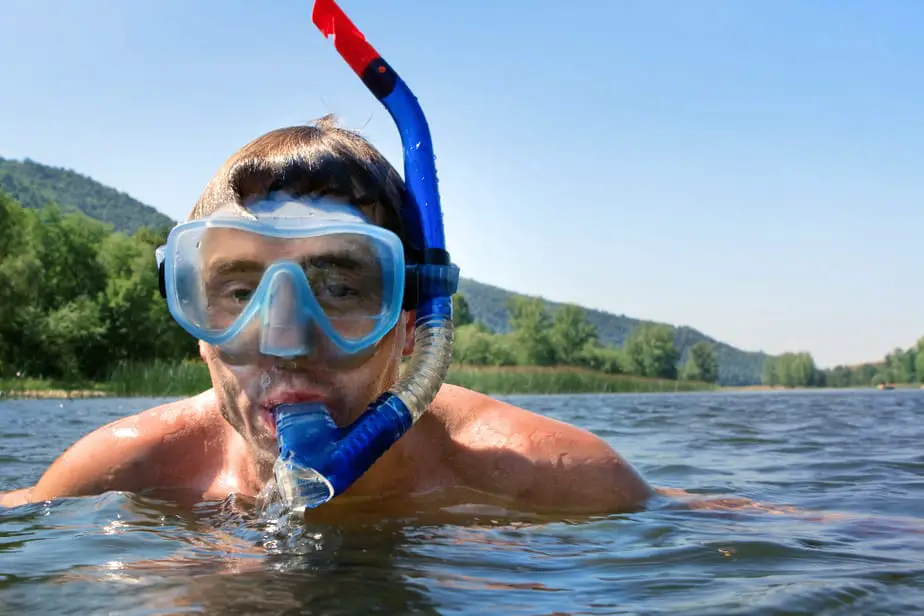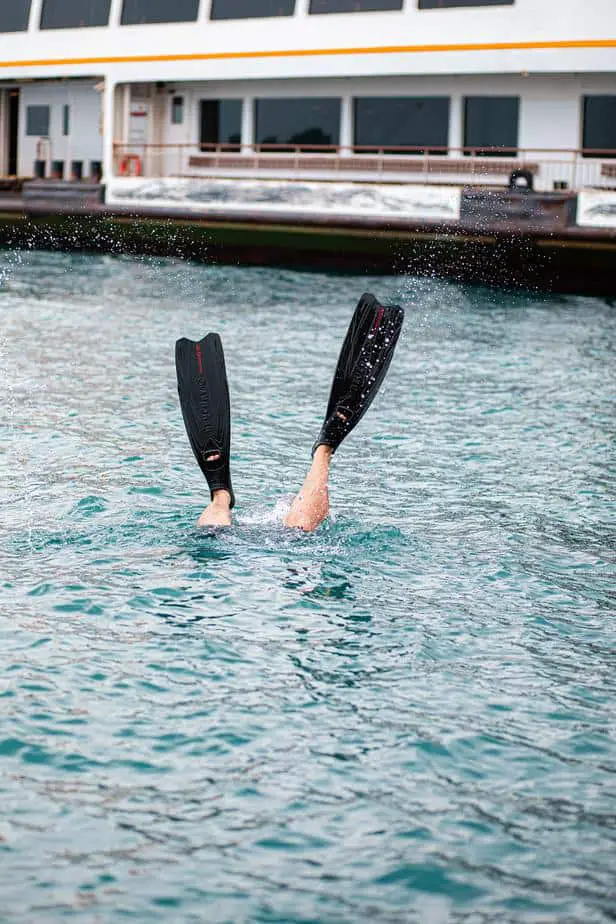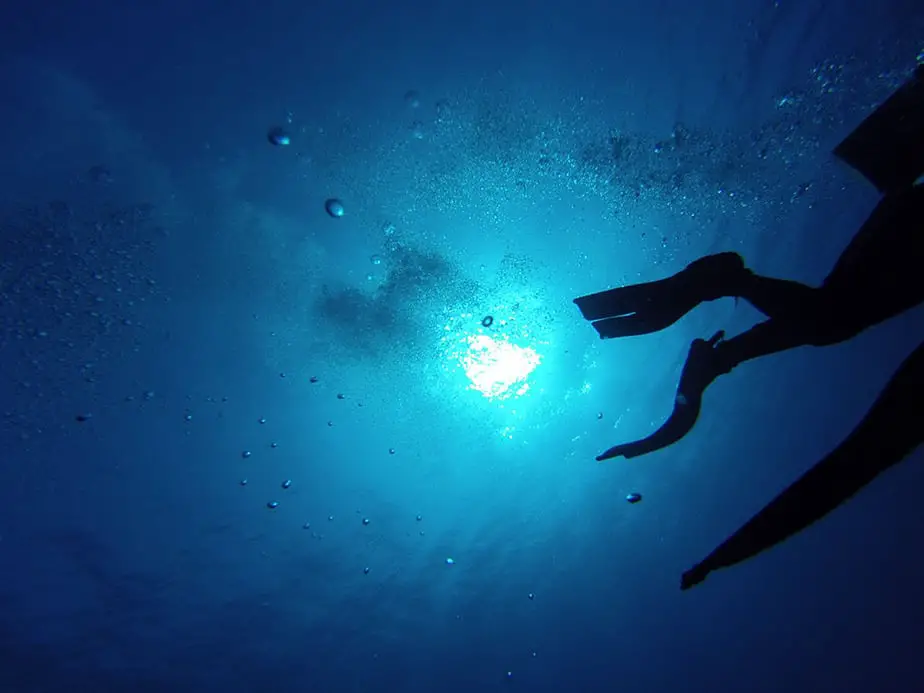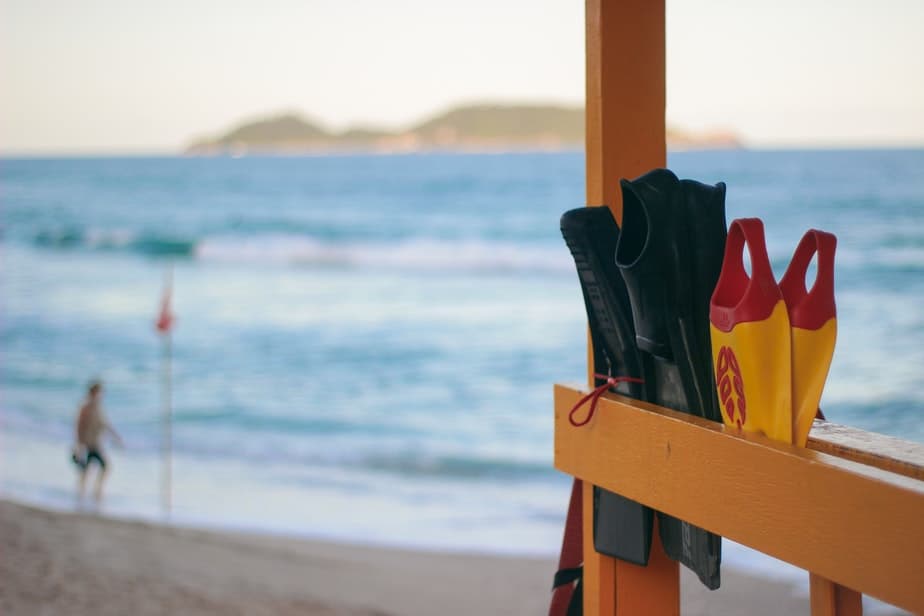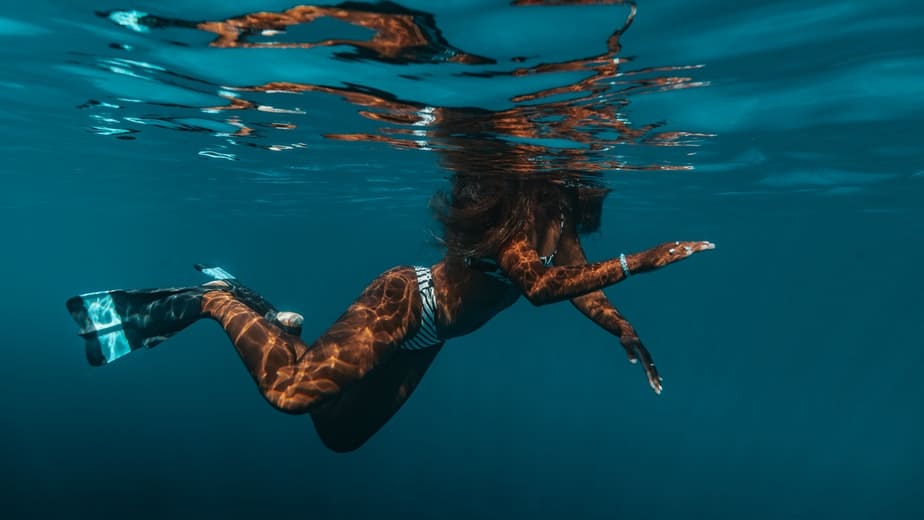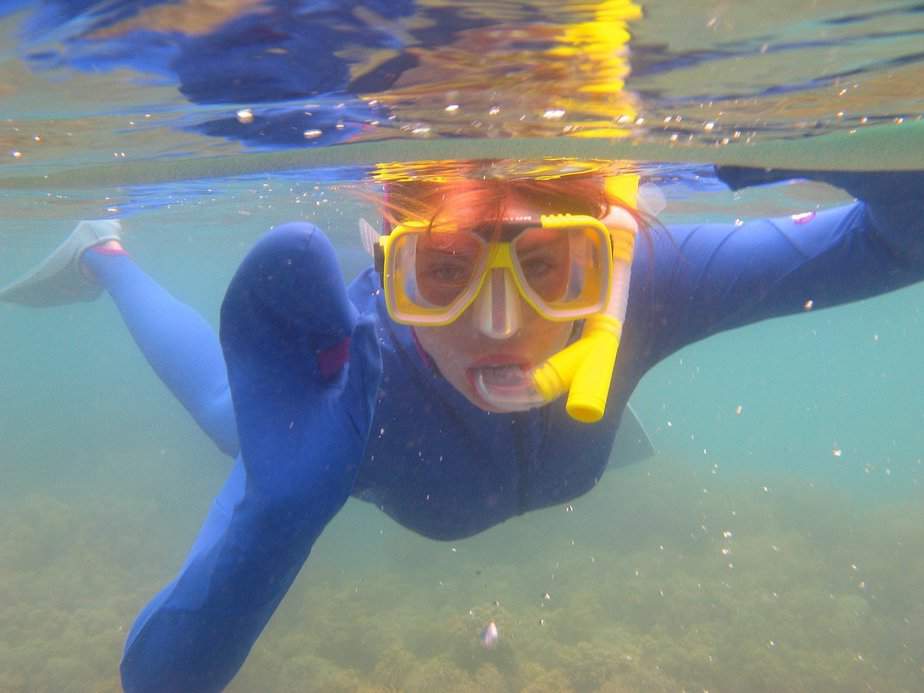If you’ve ever been on a liveaboard dive boat, you probably have seen people wearing water socks. Water socks are often worn with diving fins or water shoes so that you have extra protection in any activity where your feet can get wet.
Many people are confused as to what water socks and water shoes are. Many people mistakenly think that water socks are a type of water shoe, but they serve two different purposes. Let’s talk about water socks first.
An easy way to think of a water sock is that they are literally socks that you can wear in the water. Think about the purpose that regular socks serve on land – they keep your feet warm, they protect you from blisters and irritation, and you wear them under shoes. Same with water socks.
You do not have to wear water socks with water shoes if you don’t want to. That said, you are probably going to regret it, especially if you’re walking a lot. Sand, grit and dirt that make it into the shoe, and even the shoe itself, are going to rub painfully against your feet, and your feet will probably be freezing cold. Water socks can protect you from all of that, so they are highly recommended to be worn with water shoes.
If you would like to learn more about how water socks can benefit you, whether you’re an aspiring snorkeler, open water swimmer, surfer, kayaker, hiker, or basically anybody who spends time in the water or wet conditions, then you need to understand why water socks are so crucial.
How water socks differ from regular socks
How do water socks differ from regular socks? For one thing, the material is completely different. Instead of wool or cotton, water socks are typically made of a non-absorbent, fast-drying, water-resistant material such as neoprene.
This is the same material that wetsuits are made of, and it provides the same major benefits like heat insulation and greater durability. As such, they are sometimes referred to as neoprene socks; other names are aqua socks or swim socks.
Some water socks are made with spandex, lycra, and elastane. These are the same materials that swimsuits are made of. They differ from neoprene in that they do not provide insulation and are not as durable, but they are stretchier, more affordable, and still miles better than regular socks because of how fast-drying they are.
Advantages of wearing water socks
Protection. Water socks provide a layer of superficial protection for your feet. They aren’t good enough to replace shoes; concrete, sharp rocks, and other abrasive surfaces would tear them down quickly. However, they can protect your skin from rubbing against your water shoes as well as sand, grit, and debris that enter the shoe. They also keep your feet from being scorched by the hot sand.
Dryness. In the case of a neoprene sock, neoprene is waterproof so as long as no water enters from the opening of the sock, your feet can stay completely dry. As for water socks made of spandex or lycra, they don’t absorb much water and dry quickly. You won’t feel like you’re wearing soggy socks when wearing water socks.
Warmth (neoprene socks only). Whether a neoprene sock keeps your feet dry or not, it will keep you warm. Neoprene is great at insulating heat. Any water that makes its way into your neoprene socks will get warmed up by the trapped heat and form a warm layer of water around your feet, which is why neoprene socks can keep your feet warm underwater as well. The thicker your neoprene socks are, the greater their insulating capability.
Versatility. Water socks can be worn for various water sports like diving, swimming, kayaking, surfing, fishing, and even land activities like skiing, snowboarding, hiking, and traveling in general. Any situation where you feel like your feet could get wet, make sure you wear a solid pair of neoprene socks to keep you warm and prevent blisters, cuts, bruises, sunburn, numbness, and so on.
When should you wear water socks?
Water socks are a fantastic option whenever you’re outdoors in an environment where you expect to get wet. You don’t necessarily have to be in a body of water, such as a lake or ocean to justify wearing it. Even when you’re going camping, hiking, or walking along the shore where you have a reasonable expectation your shoes will get wet, you should be wearing water socks.
One thing to note is that water socks are not meant to be worn like shoes. Some people still make the mistake that water socks are the same as water shoes. You wear water socks under shoes, preferably water shoes, or you can just wear it with a pair of beater shoes you don’t care about.
As durable as water socks are, they will quickly get worn down if used to step on abrasive surfaces like gravel or concrete. They are meant to protect your feet from sand, grit, and dirt that makes its way into your shoes. However, shoes with a sturdy sole are still required to walk on anything more abrasive or jagged than the aforementioned.
Some common activities people do while wearing water socks are kayaking, canoeing, swimming, fly fishing, scuba diving, snorkeling, surfing, and hiking or backpacking.
Can you wear regular socks under water socks?
You can wear regular wool socks under neoprene socks specifically. Neoprene socks are waterproof so they can keep your feet dry underneath. That way, your regular socks won’t get wet either, and can continue to keep your feet warm.
This only works with neoprene socks because any other material allows water to seep through. Neoprene socks are specifically designed to be insulating in order to provide comfort in wet conditions. That said, water can still get inside if it enters from the top opening of the sock, so be careful where you step.
Why water socks and water shoes work well together
If you’re wearing a non-neoprene water sock, you can expect your feet to get a bit wet. That’s fine, though, because lycra water socks are designed to be non-absorbent, breathable, and fast-drying. Water shoes work under the same principle. They are not designed to keep you dry, but rather to dry quickly when wet.
Since both the water sock and water shoes are so breathable and airy, your feet will dry very quickly when wet. The moisture-wicking material also ensures that any sweat you produce will be aired out as well.
If you are in temperate conditions, you must specifically wear neoprene socks that are 3 to 5 mm thick to keep you dry and warm, paired with waterproof shoes. Since neoprene socks are much thicker than other water socks, you have to account for this extra thickness by sizing up your shoe otherwise it will feel too tight to wear.

